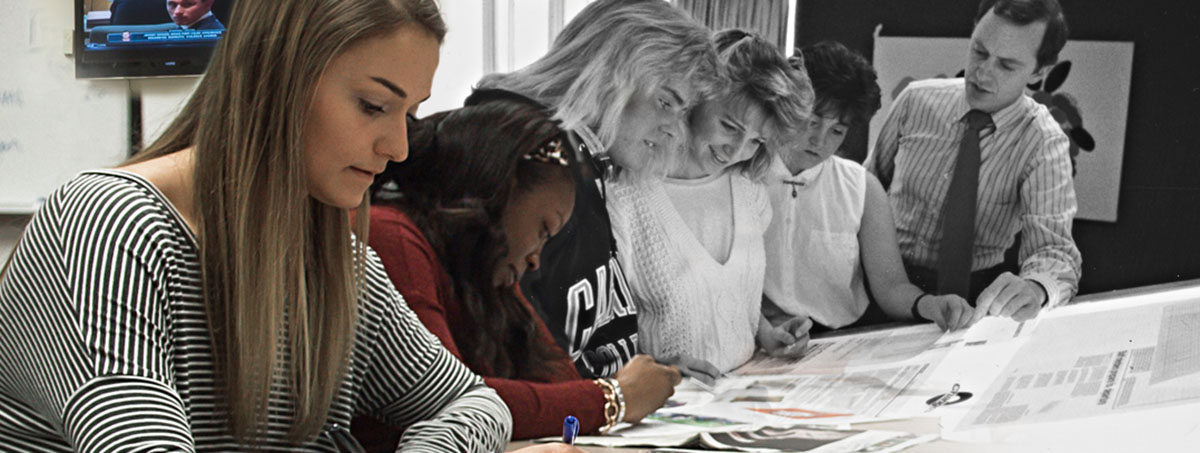Depending on your class year, your memories of Cabrini may look much different than the Cabrini of today. Over Cabrini’s 60 years, we’ve gone from College to University, buildings have been added, faculty members have come and gone (and stayed), and the demographics of our student body have shifted. Enjoy this glimpse back in time to Cabrini’s beginning years, compared to the campus, faculty, and student experience today!
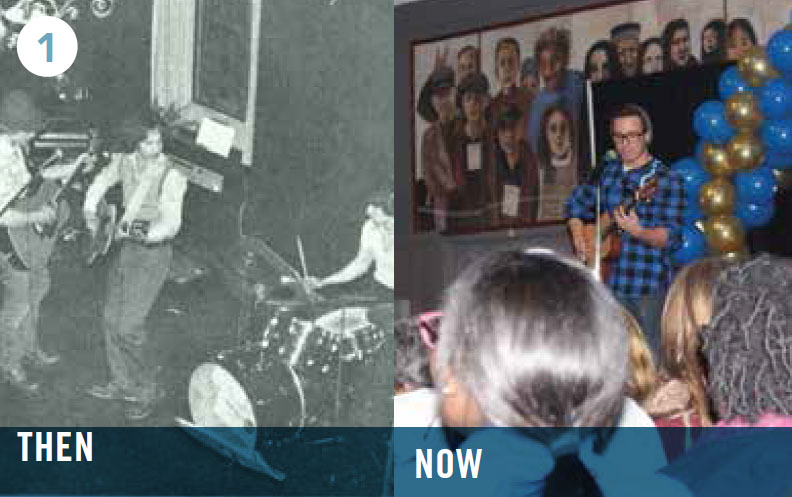
In the 1970s, students would put on talent acts, filled with singing, dancing, juggling, and playing instruments, during Evenings at Cabrini, according to Mike Walczak (’77). “Even faculty turned out to watch,” he said.
Now, students compete in the highly anticipated annual Mr. and Miss Cabrini Pageant, during which students demonstrate their talents and participate in a Q&A session to win over their peers’ votes to be crowned Mr. and Miss Cabrini.
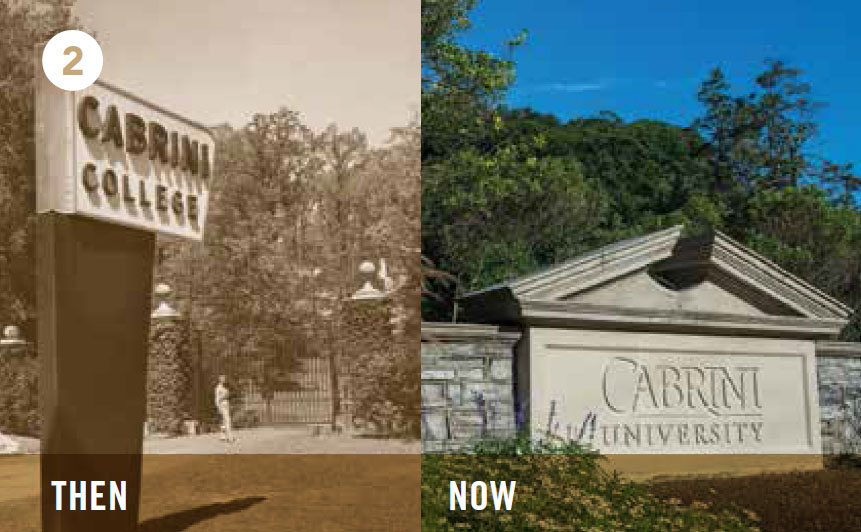
The original Cabrini College signage seen from King of Prussia Road resembled a drive-in movie theater sign, welcoming visitors to campus from at the King of Prussia Road entrance.
In 2016, Cabrini’s signs at both the King of Prussia Road entrance (main entrance) and the Upper Gulph Road entrance were updated to reflect the change to University.
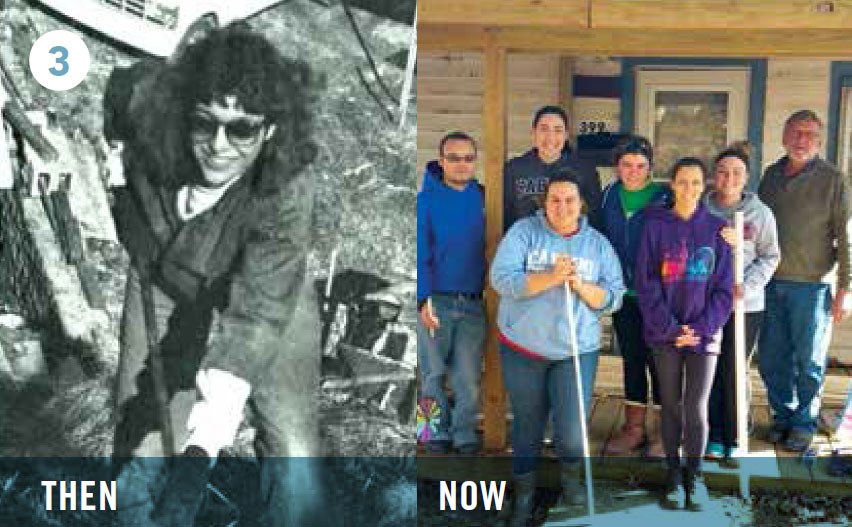
Students have participated in the Project Appalachia immersion experience to West Virginia for decades. While there, students experience the social, economic, and cultural aspects of rural poverty while living and working with the people who live in the region.
“My involvement with Campus Ministry and participating in various fundraising and volunteer opportunities contributed to my overall sense of service, spiritual foundation, and building relationships,” said Eileen Zebrowski (’88). “During spring breaks, I participated in the Project Appalachia program. The people in this community taught us many things about life, family, and living simply.”
“[Project Appalachia] helps open one’s eyes to the reality that others here in America live in vastly different situations than what we have known growing up,” said Sara Minnick (’18). “It also fosters a sense of community and gives us an opportunity to serve others. West Virginia itself is a unique place with its geographical difficulties and beauties. This place like others in the Appalachia range forester a tight community that I think is rare in the world today. Even when they are struggling they are still serving each other in order for regrowth.”
The Project Appalachia trip is just one of the many service immersion experiences in which students participate today; students also travel to New Orleans, Ecuador, and Swaziland, to name a few.
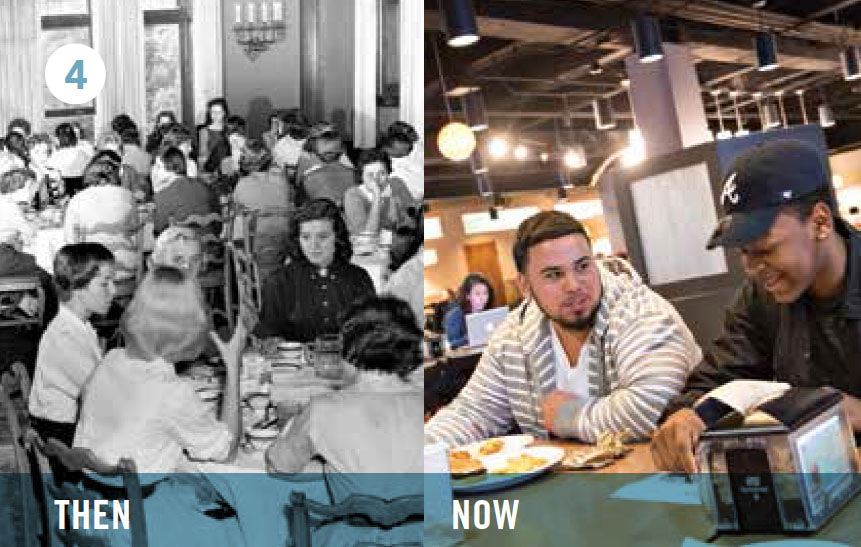
In Cabrini’s early years, students slept, learned, and even ate all of their meals in the Mansion. Cabrini Boggiano Lepis (’61) said, “There were days, almost weeks, when we didn’t leave the Mansion. Mass was in the Mansion, food was in the Mansion, classes were in the Mansion. We never went out the door!”
Now, Cabrini students have several dining options on campus, including the main dining hall, Cavs Corner, located on the first floor of Founder’s Hall (previously Sacred Heart Hall).
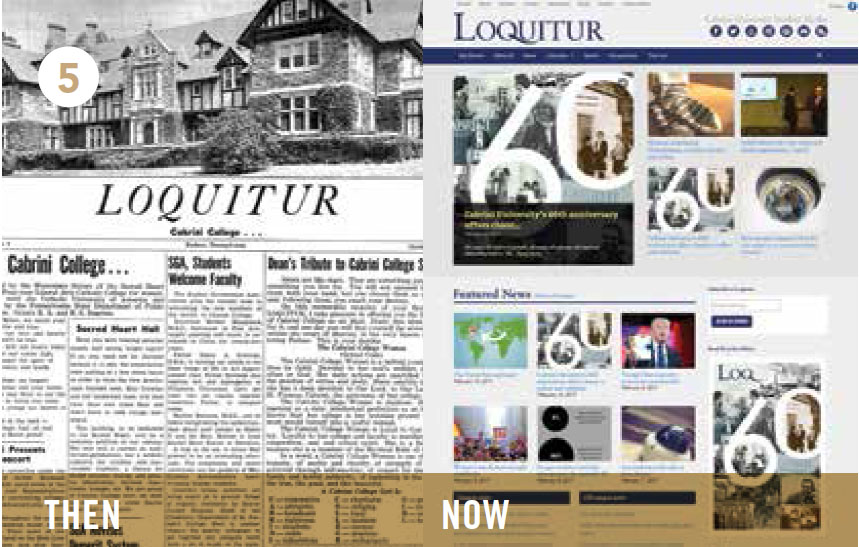
The first issue of Cabrini’s student newspaper, the Loquitur, came out on Oct. 23, 1959, featuring Cabrini’s Alma Mater, the Cabrini College School Code, the construction of Sacred Heart Hall (now Founder’s Hall), and other campus happenings. Today’s Loquitur is available online weekly and in print monthly during the school year. The newspaper has won a number of national awards, including the Associated Collegiate Press Pacemaker award, considered the highest honor in collegiate journalism.
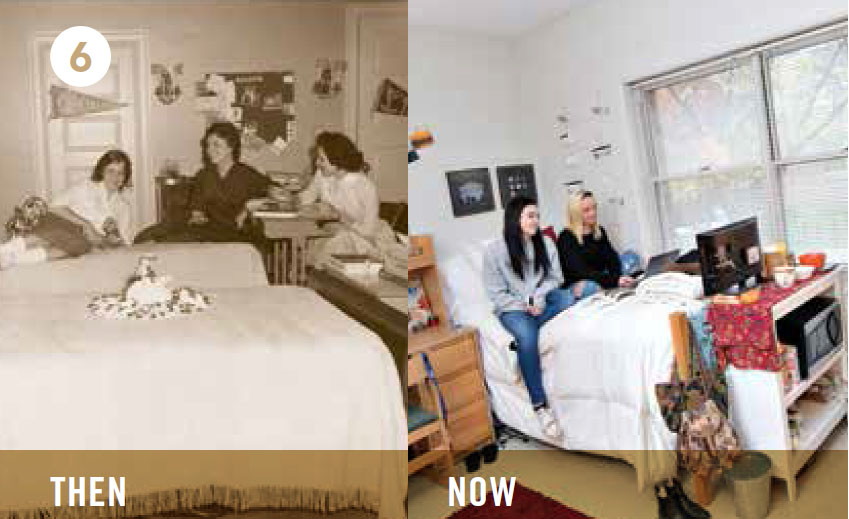
Room 8 of the Mansion was home to Cabrini classmates (left to right) Cabrini Boggiano (’61), Margaret Cassidy (’61), and Marie San Filippo (’61), who joined another 25 full-time residents—all housed in the Mansion—in the first year at Cabrini.
Today, 60 percent of Cabrini’s full-time undergraduate students live in one of 12 residence halls, in single rooms, doubles, suites, or apartments.
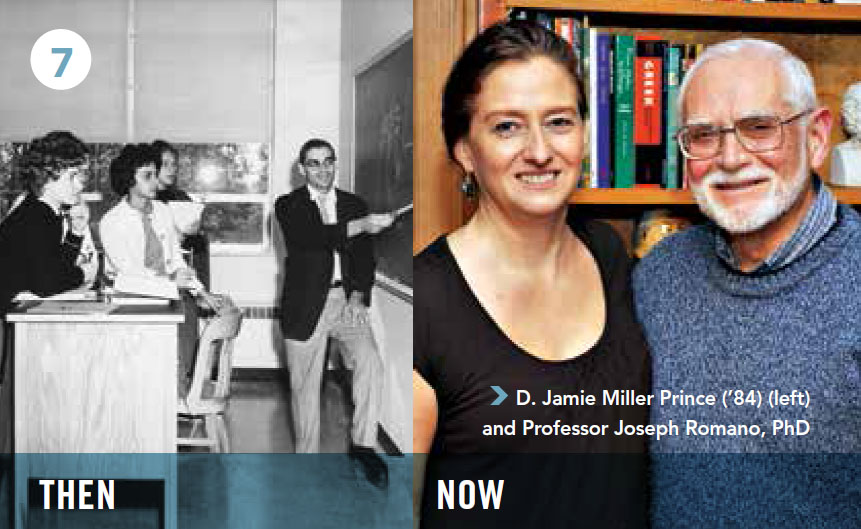
A Cabrini icon, Professor Joseph Romano, PhD, served Cabrini from 1960 to his retirement in 2014, and continues to teach as an adjunct faculty member. Though most know Romano as Professor of Philosophy, he also served as Vice President for Academic Affairs in the 1980s. With his Cabrini career spanning almost all of Cabrini’s history, Romano has crossed paths with most alumni over the years, and they continue to cite Romano as one of the most impactful Cabrini faculty members they’ve had.
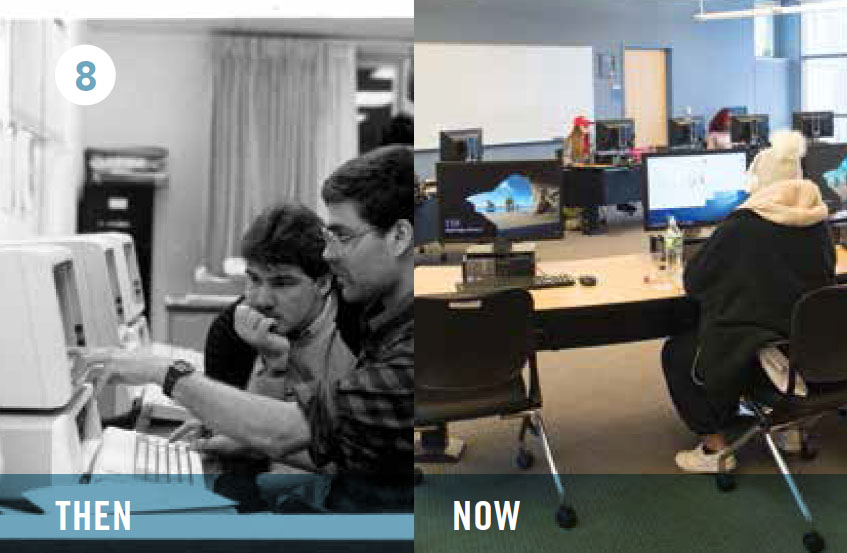
The first student computer came to campus in the fall of 1975—a single computer made available so that Mathematics majors could program in the programming language APL. Today, we have a full building dedicated to technology and progress—the Antoinette Iadarola Center for Science, Education, and Technology. The 61,000-square-foot, three-story building houses instructional and research space, including a 60-seat “smart” lecture hall, modern biology and chemistry facilities, an exercise-science laboratory, and state-of-the-art computer labs, enabling Cabrini to help our graduates compete in today’s technology-based society.
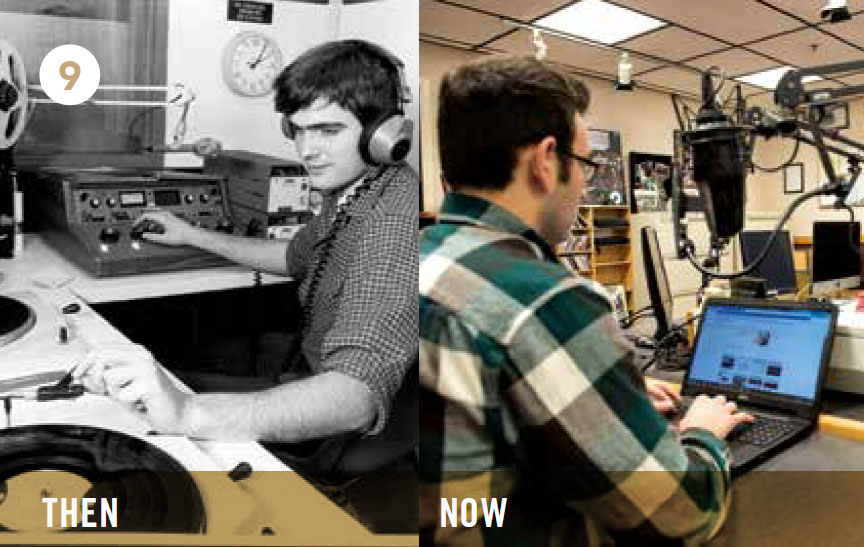
In the 1970s, students wishing to be an on-air radio presence used Villanova’s station for air time. The first “voice of the Cavaliers,” Mike Walczak (’77), who served as public address announcer for the budding men’s Athletics programs in the mid-’70s, says he wishes he “could play with the cool ‘toys’ the students in radio and TV have access to now,” like the WYBF (Cavalier Radio 89.1) studio and the Loqation studio, the Loquitur’s TV studio.
